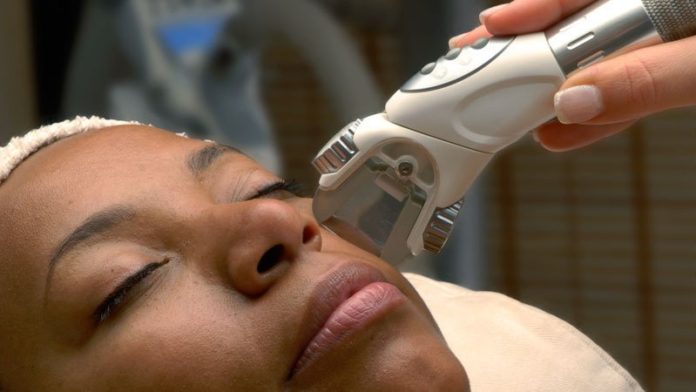
Melasma is a harmless form of hyperpigmentation; those are dark spots on the face. The spots are irregular in shape and are mainly located on the cheeks, forehead, or upper lip. The discoloration usually develops gradually, without prior skin inflammation. Sometimes the development of the discoloration can be traced back to a hormonal fluctuation. In this article, we will discuss in detail melasma treatment.
For example, during pregnancy, changing contraceptive pills or using an IUD. It also occurs for no apparent reason. Usually it occurs in women, but sometimes also in men. Sometimes the spots disappear on their own after a pregnancy.
They often persist and return every summer, under the influence of more UV radiation. UV radiation from both the natural sun and the tanning bed can make pigmentation spots worse.
Causes of Melasma
Melasma is also associated with both estrogen and progesterone of the female hormones. It is especially common in pregnant women, as the production of various hormones in the body is increased during pregnancy. It also occurs in women on the pill (oral contraceptives) and women on hormone replacement therapy. The condition mainly occurs in tropical climates.
Melasma develops gradually from sun exposure in combination with hormones (estrogen and progesterone) that stimulate the production of melanin – an organic pigment in the skin, also called hyperpigmentation. However, not all pigment cells in the skin get an increased activity, so that not an even but a more blotchy brown coloring of the skin, which many women experience as disfiguring. This increased production of pigment during pregnancy can also cause darker nipples, a vertical dark stripe across the abdomen and more freckles.
A pregnancy mask is most common during the second and third trimester of pregnancy. Not every pregnant woman is equally sensitive to it. It cannot be determined in advance who is sensitive to it. In subsequent pregnancies, the skin discoloration often returns and sometimes even darker than in the previous pregnancy.
How Can You Treat Melasma?
Melasma is classified by the depth of the excess pigment. This can be both superficial and deeper in the skin. The excess pigment in melasma is usually in both layers. Superficial pigment is often easy to treat. The deeper pigment is more difficult. Treatment is symptomatic because there is no solution yet to prevent or cure it.
Therapy
For melasma is to prevent the spots from forming or darkening by using sun protection with at least SPF 30 every day, also in winter. hour so far that relubrication is necessary.
With melasma, we recommend that you lubricate or powder every two hours when you are outside, your workplace is close to a window or you are in the car (glass allows UVA radiation to pass through, which activates the pigment).
It is difficult to find sun protection in the shop that does not contain alcohol or perfume. Alcohol and perfumes can irritate your skin, completely in combination with treatments in practice and the exfoliating (peeling) home products.
In powder form we have the mineral Colorescience Sunforgettable with SPF 30; this way your make-up stays in place and you only need to add powder.
The Piqo4 Laser Is Extremely Suitable for Treating Melasma
The aim of the laser treatment is to tackle the excess pigment in the skin, both superficially and deeper. The PiQo4 laser has the PicoFractional handpiece; a fractional method in which the laser beam is split into all small laser beams. All skin types can be treated with this safe method. On average, 1 to 3 treatments are needed to reduce the pigment.
In addition to the laser treatment, we always recommend using the pigment-inhibiting serum from MeLine to inhibit the pigment at home after the treatment. After the treatment, the skin may temporarily become slightly darker, which, with the excess pigment in the skin, flakes off in 2 to 6 weeks or is cleaned up in the deeper layers.
Camouflage Ensures That the Pigment Is Less Noticeable
It does not improve or cure the condition. Medical camouflage creams are used. These contain much more pigments than the foundations available in perfumery and drug stores. This achieves a more covering effect. The camouflage can also be made water-resistant and smudge-proof. We have Lycogel; an opaque foundation that often covers enough and contains SPF 30.











